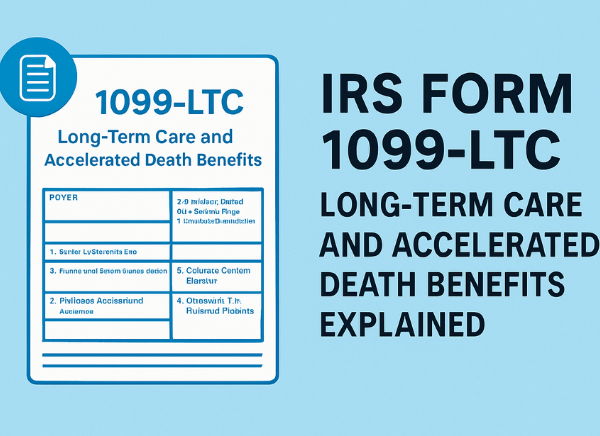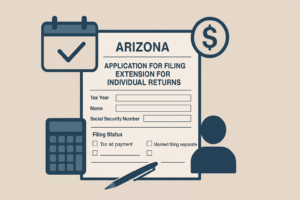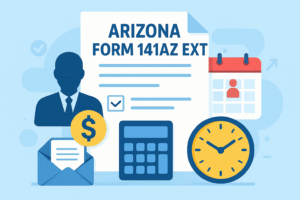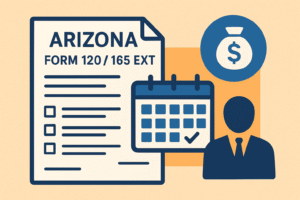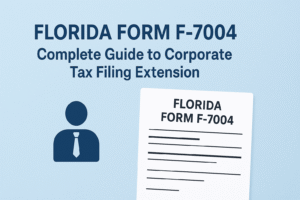Form 1099-LTC is an IRS tax document used to report payments made for long-term care services or accelerated death benefits. These payments often come from insurance policies covering chronic illness, disability, or terminal conditions. Whether you’re a payer issuing benefits or a recipient navigating the tax implications, understanding this form is essential.
In this guide, we break down who must file, what information is required, and how to handle Form 1099-LTC correctly.
What Is a 1099-LTC Form?
Form 1099-LTC is an IRS information return used to report payments made under a long-term care insurance contract or accelerated death benefits. Insurance companies, government programs, or viatical settlement providers issue this form to both the IRS and recipients (typically individuals receiving these benefits or their representatives).
These payments may or may not be taxable, depending on the amount received, the nature of the policy, and whether actual long-term care expenses were incurred.
What Are LTC Benefits and Accelerated Death Benefits?
Long-Term Care (LTC) Benefits
LTC benefits are payments made to individuals who require assistance with daily living activities (e.g., bathing, dressing, eating) due to chronic illness, disability, or aging. These benefits can be paid directly to the individual or to a care facility under a qualified long-term care insurance contract.
A qualified LTC insurance policy must meet IRS standards, including:
- Guaranteed renewability,
- No cash surrender value,
- Compliance with specific consumer protection rules,
- Coverage of only qualified LTC services.
Accelerated Death Benefits
Accelerated death benefits are life insurance proceeds paid out before death when the insured is terminally or chronically ill. These benefits reduce the final death benefit and are generally not taxable if:
- The insured is certified by a physician as chronically or terminally ill,
- The payments meet IRS exclusion requirements.
Who Must File Form 1099-LTC?
The following entities are required to file Form 1099-LTC with the IRS:
- Insurance companies making payments under qualified LTC insurance contracts,
- Life insurance companies paying out accelerated death benefits,
- Viatical settlement providers purchasing life insurance policies from terminally or chronically ill individuals,
- Government programs paying LTC or death-related benefits (if not exempt).
Note: Individuals (such as family members) who make informal care payments are generally not required to file this form.
Who Receives Form 1099-LTC?
Recipients of Form 1099-LTC may include:
- The insured individual receiving the LTC or accelerated death benefit,
- A designated beneficiary or legal representative,
- A care facility or caregiver receiving direct payment (if applicable),
- The IRS, for compliance and information reporting.
The form helps recipients determine whether their payments are taxable and whether they need to file Form 8853.
When Is the Form 1099-LTC Due Date?
For tax year 2025, the deadlines are as follows:
- Recipient copy deadline: January 31, 2026
- IRS filing deadline (paper): February 28, 2026
- IRS filing deadline (e-file): March 31, 2026
Instructions for Form 1099-LTC
1. Determine If Your Payments Were Taxable
Ask the following:
Was the payment for long-term care?
If yes, it may be non-taxable if:
- The benefits were paid under a qualified LTC policy, and
- The payments did not exceed the greater of:
- Actual LTC expenses incurred, or
- The per diem limit set by the IRS (e.g., $420/day for 2025, indexed annually).
Was the payment for accelerated death benefits?
These are generally excluded from income if:
- The insured is chronically ill or terminally ill (physician certified),
- The payer is not a viatical settlement company (unless exempt),
- The policy meets the IRS exclusion requirements.
2. Fill Out Form 8853 If Needed
If you received LTC benefits under a per diem plan or accelerated death benefits, and some or all payments are taxable, you must file Form 8853 (Archer MSAs and LTC Insurance Contracts) with your federal income tax return.
Information Required to Complete Form 1099-LTC
To accurately complete Form 1099-LTC, you’ll need:
- Payer’s name, address, and TIN (Taxpayer Identification Number)
- Recipient’s name, address, and TIN
- Insured person’s details (if different from recipient)
- Date of birth of the insured
- Date certified as chronically or terminally ill
- Qualified contract information
- Type of benefits paid (LTC vs. accelerated)
- Amount paid during the year
- Whether benefits were paid per diem or reimbursed expenses
W-9 for 1099-LTC
Form W-9 (Request for Taxpayer Identification Number and Certification) is used by payers to:
- Collect the recipient’s correct TIN,
- Avoid backup withholding,
- Ensure correct reporting to the IRS.
A properly completed W-9 helps prevent penalties and delays in the disbursement of benefits. If the recipient fails to submit Form W-9, the payer may be required to withhold 24% for backup withholding.
How to Complete Form 1099-LTC (Box by Box)
Here’s a box-by-box breakdown:
- Payer details
- Policyholder details
- Box 1 (Gross LTC Benefits Paid): Total amount of LTC benefits paid in the tax year.
Box 2 (Accelerated Death Benefits Paid): Total amount paid under accelerated death benefit provisions.
Box 3 (Per Diem or Reimbursed Amounts): Check the box that applies:- “Per diem” if the payment was a set daily amount regardless of expenses.
- “Reimbursed amount” if payment matched actual care expenses.
- Box 4 (Qualified Contract Indicator): Check if the policy is a qualified LTC contract.
- Box 5 (Chronically or Terminally Ill Indicator):
- Check if the insured was chronically ill (with physician certification).
- Check if terminally ill (life expectancy < 24 months).
- Insured’s Name and SSN: Enter insured’s information if different from recipient.
- Insured’s Date of Birth: Required for identifying eligibility and certification requirements.
How to File Form 1099-LTC
Step 1: Prepare the Form
Use the official IRS version of Form 1099-LTC (not a copy or PDF printout). Complete all relevant boxes.
Step 2: Furnish to Recipient
Provide Copy B to the insured or recipient by January 31 of the following year.
Step 3: File with the IRS
- Use Form 1096 as a transmittal if filing by paper.
- Or use the FIRE system (Filing Information Returns Electronically) to e-file.
Where to Send Form 1099-LTC – Mailing Address
If filing by paper, send Form 1099-LTC and Form 1096 to the appropriate IRS address based on your location.
| If your business operates in or your legal residence is… | Mail Form 1099-LTC to… |
| Alabama, Arizona, Arkansas, Delaware, Florida, Georgia, Kentucky, Maine, Massachusetts, Mississippi, New Hampshire, New Jersey, New Mexico, New York, North Carolina, Ohio, Texas, Vermont, Virginia | Internal Revenue ServiceAustin Submission Processing CenterP.O. Box 149213Austin, TX 78714 |
| Alaska, Colorado, Hawaii, Idaho, Illinois, Indiana, Iowa, Kansas, Michigan, Minnesota, Missouri, Montana, Nebraska, Nevada, North Dakota, Oklahoma, Oregon, South Carolina, South Dakota, Tennessee, Utah, Washington, Wisconsin, Wyoming | Department of the TreasuryIRS Submission Processing CenterP.O. Box 219256Kansas City, MO 64121-9256 |
| California, Connecticut, District of Columbia, Louisiana, Maryland, Pennsylvania, Rhode Island, West Virginia | Department of the TreasuryIRS Submission Processing Center1973 North Rulon White Blvd.Ogden, UT 84201 |
| Outside the United States | Internal Revenue Service,Austin Submission Processing Center,P.O. Box 149213,Austin, TX 78714 |
What Are the Penalties for Not Filing 1099-LTC?
Penalties for failure to file Form 1099-LTC can be significant:
| Delay in Filing | Penalty Per Form (2025) |
| Within 30 days | $60 |
| 31 days to August 1 | $120 |
| After August 1 or not filed | $310 |
| Intentional disregard | $630 or more |
Penalties apply both for failing to file with the IRS and for not furnishing recipient copies on time.
How to Extend the 1099-LTC Deadline
Filing Deadline Extension
You can request an automatic 30-day extension to file with the IRS using:
- Form 8809 (Application for Extension of Time to File Information Returns)
- Must be filed by March 31, 2026 (for e-filers)
Recipient Copy Deadline Extension
Use Form 15397 to request a 30-day extension to provide Form 1099-LTC to recipients.
- Must be filed before January 31, 2026
- Must include a valid reason (e.g., medical emergency, natural disaster)
What Recipients Do with 1099-LTC
If you receive Form 1099-LTC:
- Review the form carefully to confirm correct amounts and recipient info.
- Determine whether payments are taxable or excluded from income.
- File Form 8853 if needed (especially for per diem payments that exceed IRS limits).
- Keep a copy for your records and consult a tax professional if you’re unsure about the tax implications.
Final Thoughts
Form 1099-LTC plays a vital role in accurately reporting long-term care and accelerated death benefits. Understanding the nuances of how and when to file, what each box means, and how these benefits are taxed ensures compliance and minimizes risk for both payers and recipients.
Stay informed, file timely, and when in doubt, consult a tax advisor or financial professional to navigate LTC-related tax matters with confidence.

